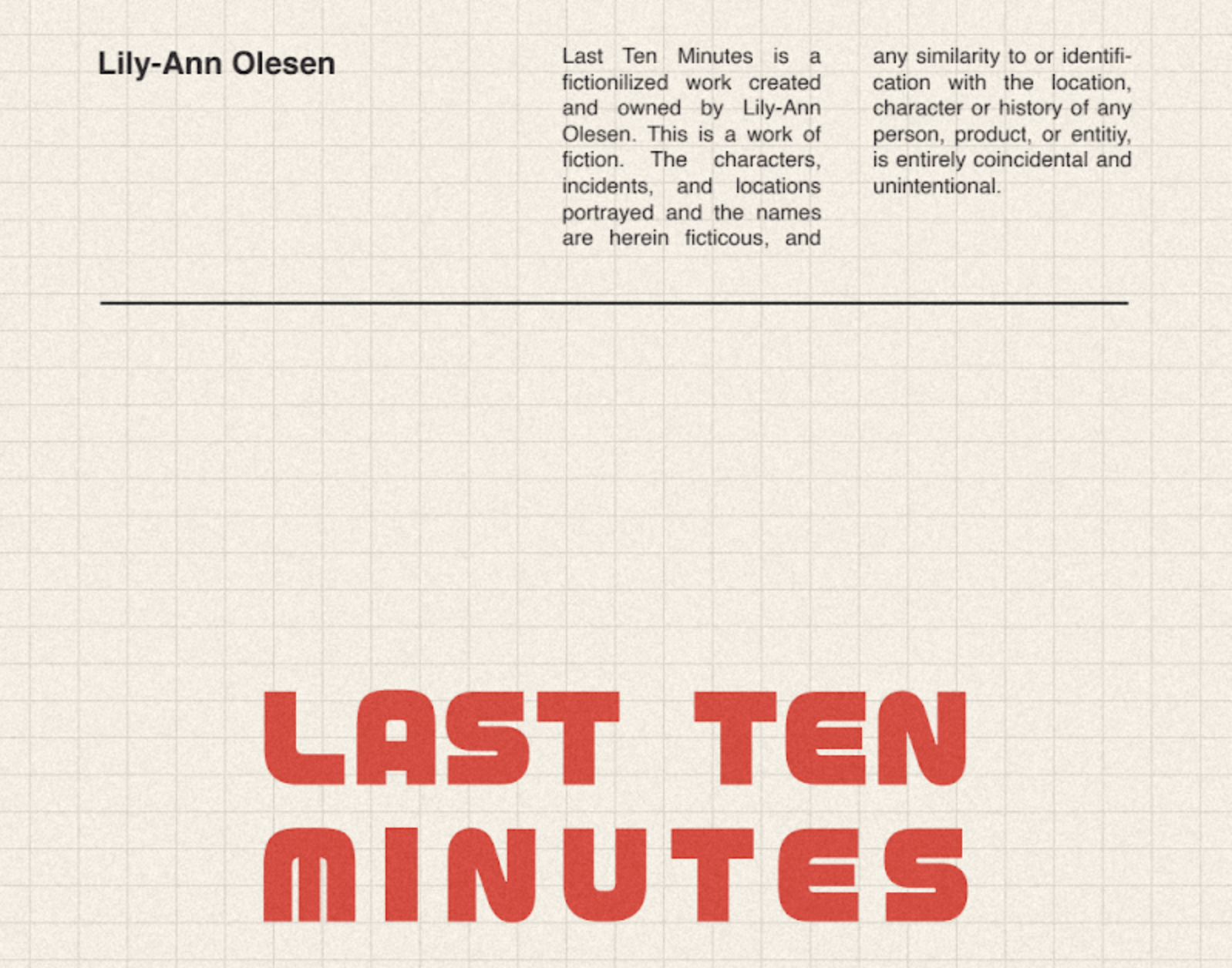Class Spotlight: Podcasting: Intro to Audio Storytelling with Brontë Mansfield

Lily-Ann Olesen presented the pitch deck for her podcast concept Last Ten Minutes as part of her class final.
Lily-Ann Olesen presented the pitch deck for her podcast concept Last Ten Minutes as part of her class final.
by Megan Kirby
In the world of media, podcasts are still fresh. Newspapers have been around since the 17th century, but podcasts only started taking hold in 2004. The screen fatigue of the pandemic era has more people than ever turning to audio storytelling: today, more than half of the American population listens to podcasts, and there are more than 700,000 active podcasts in the world. Lecturer Brontë Mansfield (MA 2017) says we are in the midst of a podcast boom—and the students in her podcasting class are at the forefront.
“It’s so rare to have a medium born in your lifetime,” said Mansfield. “People really have the opportunity to make some early work in this field.”
Mansfield created a podcast project for her New Arts Journalism thesis at SAIC and has been involved in freelance audio work ever since. In 2019, she began teaching a graduate-level podcasting class. When the demand for an undergraduate podcasting class became clear, she developed the curriculum for Podcasting: Introduction to Audio Storytelling in 2020. In the class, students conceive of an original storytelling podcast concept, write a pitch deck, record a trailer, and present it all to their classmates as their final project.
Students are expected to create narratives—no chat podcasts allowed. “When people think about podcasts right now, they think about a bunch of dudes sitting around a microphone,” said Mansfield. “That is not what we’re going for in this class. We’re looking for immersive audio stories.”
The syllabus lives on a Spotify playlist curated by Mansfield, where students listen to episodes of shows like nonfiction podcasts Reply All, Song Exploder, and S-Town, and fiction podcasts like MOONFACE, the imagined story of a young Asian American artist trying to come out to his Korean mother. In the class, many students create fictional concepts—and sci-fi seems to have a particular allure.
“Because you don’t have to make special visual effects, podcasts are a really great playground for science fiction,” said Mansfield. Podcasts offer a lower barrier to entry than television or movies because creators don’t need to spend their budgets on visual effects, elaborate sets, or costumes. And sci-fi podcasts are thriving in the media world. Recently, more and more science fiction podcasts are getting picked up for television pilots—including Archive 81, a podcast that was turned into a show on Netflix.
“Podcasts are a really great playground for science fiction.”
Student Lily-Ann Olesen went the sci-fi route with her concept for Last Ten Minutes, which consists of fictionalized “found tapes” that were salvaged from an ill-fated spaceship. Each episode is told from the shifting perspectives of the crew members on board—including a convict set to begin a new life, a janitor who dreams of playing the grand piano, and a droid who taps into previously unknown emotions during their last moments of existence. Olesen found the class’s collaborative aspects helpful to her process. “I was able to get feedback on my own ideas, which is really important, but I was also exposed to many ideas that were completely disconnected from my topic and genre,” says Olesen. “That kind of open communication provided a lot more perspectives from which to view the story I was crafting.”
At the same time, many students use podcasting as a venue for nonfiction stories. Student Ana Rodriguez’s Don’t Break the Chain investigates chain letters, mixing narrative storytelling with historical elements. Her final pitch document outlines six episodes of a limited series, exploring everything from biblical stories to emoji-laden text messages.
Mansfield hopes the class demystifies the podcast experience. By the time students present their pitches, they have gained the technical know-how to record and edit audio. But more than that, they learn how to collaborate, workshop, and outsource. Building a podcast can require sourcing voice actors, music, sound effects, and more. Sometimes, telling a story requires building a team. And college can be the perfect place to explore that process.
“School is such a rare time where you can experiment with unabashedly low stakes.”
“You can add another tool to your storytelling tool belt,” said Mansfield. “School is such a rare time where you can experiment with unabashedly low stakes. You don’t have to buy your own equipment. You have the experience of the people around you to guide you.”
At the end of the semester, students must pitch their projects and play their trailers for the entire class—who they have been brainstorming, workshopping, and problem-solving alongside all along. By the final session, they will have learned not just the ins and outs of building a podcast, but the process of pitching their ideas to podcasting studios.
Since the class, Olesen has scripted the full pilot for Last Ten Minutes and has several other podcast ideas in the works. “Audio art is a fascination of mine, and I fully intend on continuing to pursue it as both a professional and personal interest,” she said.
For her part, Mansfield is excited to witness the evolution of podcasting alongside her students. “I just can’t wait until the day that I’m scrolling through Spotify and I see a podcast that a student started in my class,” she said. “I feel like it’s inevitable.”
{{[http://www.saic.edu/news/students]STUDENTS}} {{[http://www.saic.edu/news/campus]CAMPUS}}{{[http://www.saic.edu/news/artconnectsus]ART CONNECTS US}}
{{[http://www.saic.edu/news/facultystaff]FACULTY & STAFF}}
